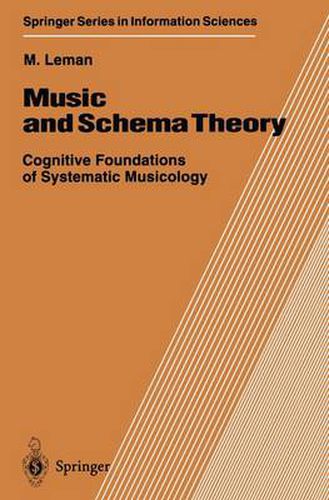Readings Newsletter
Become a Readings Member to make your shopping experience even easier.
Sign in or sign up for free!
You’re not far away from qualifying for FREE standard shipping within Australia
You’ve qualified for FREE standard shipping within Australia
The cart is loading…






This title is printed to order. This book may have been self-published. If so, we cannot guarantee the quality of the content. In the main most books will have gone through the editing process however some may not. We therefore suggest that you be aware of this before ordering this book. If in doubt check either the author or publisher’s details as we are unable to accept any returns unless they are faulty. Please contact us if you have any questions.
Music is an important domain of application for schema theory. The perceptual structures for pitch and timbre have been mapped via schemata, with results that have contributed to a better understanding of music perception. Yet we still need to know how a schema comes into existence, or how it functions in a particular perception task. This book provides a foundation for the understanding of the emergence and functionality of schemata by means of computer-based simulations of tone center perception. It is about how memory structures self-organize and how they use contextual information to guide perception.
$9.00 standard shipping within Australia
FREE standard shipping within Australia for orders over $100.00
Express & International shipping calculated at checkout
This title is printed to order. This book may have been self-published. If so, we cannot guarantee the quality of the content. In the main most books will have gone through the editing process however some may not. We therefore suggest that you be aware of this before ordering this book. If in doubt check either the author or publisher’s details as we are unable to accept any returns unless they are faulty. Please contact us if you have any questions.
Music is an important domain of application for schema theory. The perceptual structures for pitch and timbre have been mapped via schemata, with results that have contributed to a better understanding of music perception. Yet we still need to know how a schema comes into existence, or how it functions in a particular perception task. This book provides a foundation for the understanding of the emergence and functionality of schemata by means of computer-based simulations of tone center perception. It is about how memory structures self-organize and how they use contextual information to guide perception.